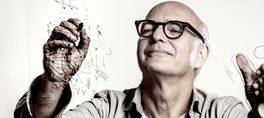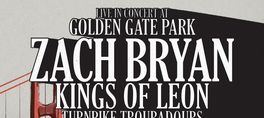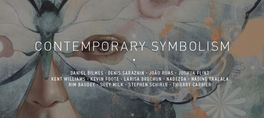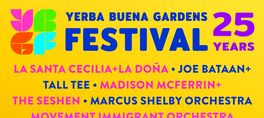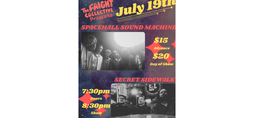Dr. Tom Abel of Stanford University will give a free, illustrated, non-technical talk on:
“How Things in the Universe Came About and How They Ended Up Within Us”
in the Smithwick Theater at Foothill College, in Los Altos.
The talk is part of the Silicon Valley Astronomy Lecture Series, now in its 16th year.
Abel will take the audience on a journey through the early stages of the universe, using the latest computer animations of how the first stars formed and died, and how stars built up the first galaxies. His work has shown that the first luminous objects in the universe were very massive stars, shining one million times as brightly as our Sun. They died quickly and seeded the cosmos with the chemical elements necessary for life. Galaxies started to assemble just one hundred million years after the Big Bang, and they are still growing now. Computer simulations of these events provide remarkable insights into the early history of the cosmos.
Abel is a computational astronomer who explores cosmic history using supercomputer calculations. A professor of physics at Stanford University and the SLAC National Accelerator Laboratory, he directs the Kavli Institute for Particle Astrophysics and Cosmology. Abel's long-term goal is "to build a galaxy, one star at a time," via computer modeling. Among his research interests are the processes and events of "the dark ages," the first few hundred million years after the Big Bang. His visualizations and simulations of dark-age events and have been featured on PBS, the Discovery Channel, and the cover of National Geographic.
Foothill College is just off the El Monte Road exit from Freeway 280 in Los Altos. For directions and parking information, see: http://www.foothill.edu/news/transportation.php
For a campus map, see: http://www.foothill.edu/news/maps.php
The lecture is co-sponsored by:
* The Astronomical Society of the Pacific
* The SETI Institute
* NASA Ames Research Center
* The Foothill College Astronomy Program.
We get large crowds for these talks, so we ask people to try to arrive a little bit early to find parking. The lecture is free, but there is a charge of $3 for parking on campus and exact change is appreciated.
Past lectures in the series can be found on YouTube at http:// https://www.youtube.com/SVAstronomyLectures
show less
“How Things in the Universe Came About and How They Ended Up Within Us”
in the Smithwick Theater at Foothill College, in Los Altos.
The talk is part of the Silicon Valley Astronomy Lecture Series, now in its 16th year.
Abel will take the audience on a journey through the early stages of the universe, using the latest computer animations of how the first stars formed and died, and how stars built up the first galaxies. His work has shown that the first luminous objects in the universe were very massive stars, shining one million times as brightly as our Sun. They died quickly and seeded the cosmos with the chemical elements necessary for life. Galaxies started to assemble just one hundred million years after the Big Bang, and they are still growing now. Computer simulations of these events provide remarkable insights into the early history of the cosmos.
Abel is a computational astronomer who explores cosmic history using supercomputer calculations. A professor of physics at Stanford University and the SLAC National Accelerator Laboratory, he directs the Kavli Institute for Particle Astrophysics and Cosmology. Abel's long-term goal is "to build a galaxy, one star at a time," via computer modeling. Among his research interests are the processes and events of "the dark ages," the first few hundred million years after the Big Bang. His visualizations and simulations of dark-age events and have been featured on PBS, the Discovery Channel, and the cover of National Geographic.
Foothill College is just off the El Monte Road exit from Freeway 280 in Los Altos. For directions and parking information, see: http://www.foothill.edu/news/transportation.php
For a campus map, see: http://www.foothill.edu/news/maps.php
The lecture is co-sponsored by:
* The Astronomical Society of the Pacific
* The SETI Institute
* NASA Ames Research Center
* The Foothill College Astronomy Program.
We get large crowds for these talks, so we ask people to try to arrive a little bit early to find parking. The lecture is free, but there is a charge of $3 for parking on campus and exact change is appreciated.
Past lectures in the series can be found on YouTube at http:// https://www.youtube.com/SVAstronomyLectures
Dr. Tom Abel of Stanford University will give a free, illustrated, non-technical talk on:
“How Things in the Universe Came About and How They Ended Up Within Us”
in the Smithwick Theater at Foothill College, in Los Altos.
The talk is part of the Silicon Valley Astronomy Lecture Series, now in its 16th year.
Abel will take the audience on a journey through the early stages of the universe, using the latest computer animations of how the first stars formed and died, and how stars built up the first galaxies. His work has shown that the first luminous objects in the universe were very massive stars, shining one million times as brightly as our Sun. They died quickly and seeded the cosmos with the chemical elements necessary for life. Galaxies started to assemble just one hundred million years after the Big Bang, and they are still growing now. Computer simulations of these events provide remarkable insights into the early history of the cosmos.
Abel is a computational astronomer who explores cosmic history using supercomputer calculations. A professor of physics at Stanford University and the SLAC National Accelerator Laboratory, he directs the Kavli Institute for Particle Astrophysics and Cosmology. Abel's long-term goal is "to build a galaxy, one star at a time," via computer modeling. Among his research interests are the processes and events of "the dark ages," the first few hundred million years after the Big Bang. His visualizations and simulations of dark-age events and have been featured on PBS, the Discovery Channel, and the cover of National Geographic.
Foothill College is just off the El Monte Road exit from Freeway 280 in Los Altos. For directions and parking information, see: http://www.foothill.edu/news/transportation.php
For a campus map, see: http://www.foothill.edu/news/maps.php
The lecture is co-sponsored by:
* The Astronomical Society of the Pacific
* The SETI Institute
* NASA Ames Research Center
* The Foothill College Astronomy Program.
We get large crowds for these talks, so we ask people to try to arrive a little bit early to find parking. The lecture is free, but there is a charge of $3 for parking on campus and exact change is appreciated.
Past lectures in the series can be found on YouTube at http:// https://www.youtube.com/SVAstronomyLectures
read more
“How Things in the Universe Came About and How They Ended Up Within Us”
in the Smithwick Theater at Foothill College, in Los Altos.
The talk is part of the Silicon Valley Astronomy Lecture Series, now in its 16th year.
Abel will take the audience on a journey through the early stages of the universe, using the latest computer animations of how the first stars formed and died, and how stars built up the first galaxies. His work has shown that the first luminous objects in the universe were very massive stars, shining one million times as brightly as our Sun. They died quickly and seeded the cosmos with the chemical elements necessary for life. Galaxies started to assemble just one hundred million years after the Big Bang, and they are still growing now. Computer simulations of these events provide remarkable insights into the early history of the cosmos.
Abel is a computational astronomer who explores cosmic history using supercomputer calculations. A professor of physics at Stanford University and the SLAC National Accelerator Laboratory, he directs the Kavli Institute for Particle Astrophysics and Cosmology. Abel's long-term goal is "to build a galaxy, one star at a time," via computer modeling. Among his research interests are the processes and events of "the dark ages," the first few hundred million years after the Big Bang. His visualizations and simulations of dark-age events and have been featured on PBS, the Discovery Channel, and the cover of National Geographic.
Foothill College is just off the El Monte Road exit from Freeway 280 in Los Altos. For directions and parking information, see: http://www.foothill.edu/news/transportation.php
For a campus map, see: http://www.foothill.edu/news/maps.php
The lecture is co-sponsored by:
* The Astronomical Society of the Pacific
* The SETI Institute
* NASA Ames Research Center
* The Foothill College Astronomy Program.
We get large crowds for these talks, so we ask people to try to arrive a little bit early to find parking. The lecture is free, but there is a charge of $3 for parking on campus and exact change is appreciated.
Past lectures in the series can be found on YouTube at http:// https://www.youtube.com/SVAstronomyLectures
show less
Date/Times:
12345 El Monte Road, Los Altos Hills, CA 94022
The Best Events
Every Week in Your Inbox
From Our Sponsors
UPCOMING EVENTS
Great suggestion! We'll be in touch.
Event reviewed successfully.

